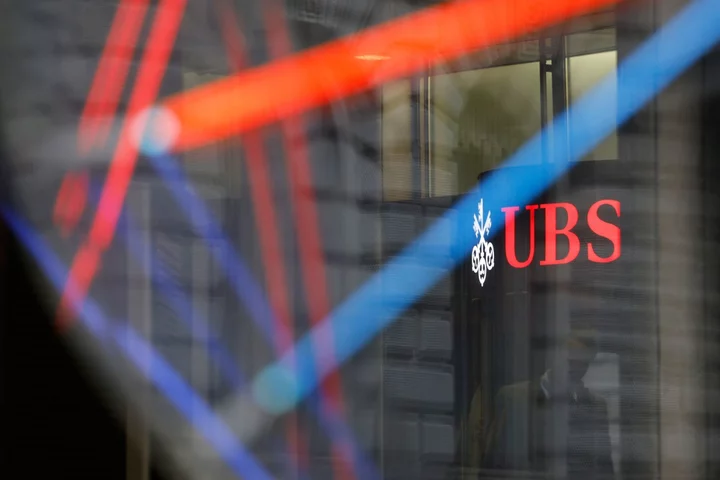UBS Group AG reported stronger-than-expected client inflows in its wealth-management business, boosted by the first signs of stabilization at Credit Suisse as it carries out an expensive and complex integration of its former rival.
The unit saw net new money of $22 billion in the third quarter, compared with an estimate of $14 billion. About $3 billion of that was at Credit Suisse’s wealth arm, its first positive client flows in a year and a half.
The Zurich-based bank posted a net loss of $785 million for the three months to September, its first quarterly loss in almost six years, as costs to absorb Credit Suisse came in at $2 billion. A further $1 billion of charges are expected to come in the fourth quarter.
UBS Chief Executive Officer Sergio Ermotti is seeking to chart a path through the biggest merger in finance in decades, readying the combined bank for a strategic revamp due to be announced in February. The bank’s shares have gained by about 30% this year as investors back Ermotti’s plan to integrate Credit Suisse’s profitable businesses while winding down the rest.
The bank is in “full execution mode” around the integration, Ermotti said on a call with analysts.
UBS shares were up 3.6% at 11:10 a.m in Zurich.
Profit at the asset management unit came in lower than expected. UBS said ongoing uncertainty over the economic outlook, including central-bank rate increases and geopolitical tensions, may affect wealth-management clients’ willingness to conduct transactions in the fourth quarter.
Investment Bank
UBS reported an increase in investment banking revenues of 36% compared to the same period last year, driven by fees from mergers & acquisitions and leveraged capital markets. In trading, UBS’s revenues for equities decreased 3% from the prior year reflecting a difficult market that contributed to mixed results across Wall Street banks.
For its smaller fixed income, rates and currency trading business, UBS’s revenues were down 37% from the prior year, faring much worse than US trading houses.
UBS has signaled it will shutter roughly two-thirds of Credit Suisse’s investment bank as it absorbs its former rival, including almost all its trading operations as part of plans to exit businesses that don’t fit with its existing strategy.
UBS said it accelerated the wind-down of assets inherited from Credit Suisse that it doesn’t want to continue, reducing risk-weighted assets by $6.4 billion in the quarter.
The Swiss bank has said it will give an update on its share buyback program in February, around the same time as full-year results.
On costs, UBS said it had already met its goal for this year of reducing expenses by some $3 billion. Personnel costs jumped however, including some $500 million in retention payments to key Credit Suisse staff.
UBS is seeking to cut the combined workforce as a way to slash costs. Managed headcount dropped by more than 4,000 in the third quarter and is down by about 13,000 against the total figure the two banks would have had as a combined entity at the end of last year, according to the report.
“UBS has made clear progress since the close of the deal, but it continues to face a huge task,” said Andreas Venditti, an analyst at Vontobel Holding AG in Zurich.
What Bloomberg Intelligence Says:
Core UBS flows and momentum in the acquired Credit Suisse business are pivotal for deal success, with an encouraging $3 billion of Credit Suisse wealth net new money in 3Q implying an acceleration to $2 billion in the final month or so of the quarter. That follows $1 billion through Aug. 28, along with $17 billion of wealth-deposit inflows ($7 billion in the final month after $10 billion in the first two months). Combined wealth flows, deposits and Swiss deposits all improved in 3Q. An acceleration of the noncore wind-down is positive, with $1 billion of integration costs expected in 4Q after $2 billion in 3Q.
— Alison Williams, BI banking analyst
--With assistance from Allegra Catelli.
(Adds Ermotti quote in fifth paragraph)

